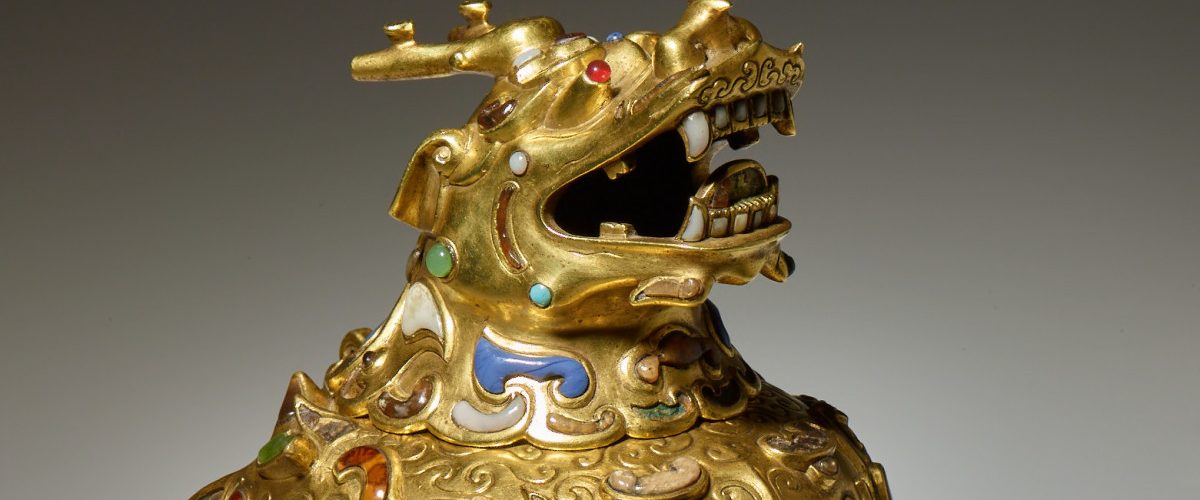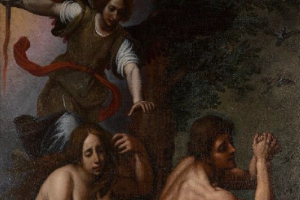(Minnesapolis, MN) — August 31st, 2022 — The Minneapolis Institute of Art (Mia) recently acquired several historic works of functional art for its Asian collection. The new pieces include a rare, unaltered straight sword created in Japan around 1280, with incredibly intricate detailing on the blade; an eighteenth-century Chinese jewel-encrusted censer shaped like a mythical beast with the features of a lion, tiger, and dragon; and a pair of Japanese folding screens presenting a serene mountain and lake scene painted on gold leaf around 1600. These extraordinary objects show the breadth of creativity and craftsmanship in the objects created for the use of upper classes and nobility—and continue building Mia’s outstanding collections of art from across Asia.
“These well-preserved objects are superb examples of their type. Each represents the high level of craftsmanship and artistry of their makers, and as such is a meaningful addition to Mia’s great collections of Asian art.” said Matthew Welch, Mia’s Deputy Director and Chief Curator. “We are honored to be tasked with the stewardship of these items and look forward to continuing to tell their stories.”
Fukuoka Ichimonji Kagenori, Straight Sword (Tachi) (c. 1280)
The blade is signed by Kagenori, an associate of the Ichimonji School of sword makers. The school was founded during the Kamakura Period (1185–1333) and flourished through the Nanbokuchō Period (1333–1392). Originally based in Fukuoka, a region on the north coast of Japan’s Kyushu Island, the school is considered one of the most important Japanese sword producers. Many of their makers would sign their works with the character “Ichi,” meaning the number one, often followed by their names. The school would later move to the Bizen Province and the blade style would continue to evolve.
Kagenori is known only by two existing swords, one of which was shortened in the distant past to better fit its owner. Kagenori marks the turning point between the elaborately decorated swords of the Fukuoka and Bizen traditions of the Ichimonji School and the later Yoshii School. This sword, which has a clear reflection in the steel and a flamboyant tempered line with irregular cloves-pattern, is one of only 97 unaltered Ichimonji School swords registered by the Society for Preservation of Japanese Art Swords (NBTHK), the world’s authoritative group on Japanese swords. The Society awarded this sword the rank of Tokubetsu Jūyō (“especially important”) in 2018, which is the highest of four ranks.
The blade is joined by an ornate mounting with a scabbard resembling black stone and pine bark. It features complete, matching fittings with a snowflake pattern, a hilt of braided black over white ray skin, and ornaments in the shape of dragons.
Unknown artist, Censer in the shape of a mythical beast, (Qing dynasty 1736–1795)
This newly acquired censer is in the shape of an imagined beast known as a Luduan, with a lion or tiger’s body, wings, and a pair of horns on its dragon-like head. The all-knowing beast can speak any language and signifies prosperity and peace. The legend of the Luduan stretches as far back as the ancient Han dynasty (second century BCE to second century CE) and into the Qing dynasty of the 1700s, when this object was made. Luduan could be sculpted from various media and often stood near the throne of the emperor as a figure of protection.
The incense smoke and scent would have poured out of the mouth of this vessel, escaping through the jeweled teeth and detailed face. The beast’s body is decorated with gems of many colors, along with scrolling motifs, arabesques, and a scale pattern—indeed, each toenail is adorned with a gemstone. The decoration is reminiscent of styles from the Steppe region of China and the Eurasian grasslands during the late Bronze Age (6th–3rd centuries BCE). Possibly made in the imperial workshop, this gilt bronze censer is characterized by the fineness of its material, its extraordinary craftsmanship, and the complexity of its themes and symbolism.
Unknown artist, Pair of six-panel folding screens showing sail boats on Yodo River in Fushimi (circa 1600; restored in 1672)
Folding screens were popular room dividers for the ruling class of Japan in the 1500s and later also for wealthy merchants. The recently acquired pair of six-panel folding screens is a remarkably abstract view of a section of the Yodo River that connects Kyoto with Osaka. The screens are an example of a genre of painting that focused on places of great beauty in Japan. Limiting the palette to gold, blue, and green tones, the only elements are bamboo, clouds, mountains, and sailboats—no people are depicted. The screens can be displayed in either order, or even in a continuous circle, mimicking the flowing river they depict.
About Mia’s Collection of Asian Art
Mia’s collection of Asian art is comprised of some 16,800 objects, ranging from ancient pottery and bronzes to works by contemporary artists, with nearly every Asian culture represented. Areas of particular depth include the arts of China, Japan, and Korea.
Specific subsets and highlights of these collections rival the holdings of museums across the globe. For its stylistic diversity and condition, Mia’s collection of ancient Chinese bronze is typically considered one of the nation’s finest. Important examples include a famous vessel in the form of an owl, superb silver inlaid works, and many other outstanding vessels from the Shang and Zhou dynasties (c. 18th–3rd century BCE). Mia’s Japanese collection has outstanding concentrations of Buddhist sculpture, woodblock prints, paintings, lacquer, works of bamboo, and ceramics, and is particularly rich in works from the Edo period (1610–1868).
The museum’s commitment to Asian art is also evident in the sheer volume of space devoted to its display. At present, Asian art occupies an impressive 20 percent (32,200 sq. ft.) of the total display space (161,000 sq. ft.) for art at Mia. The permanent display space for Japanese art is the largest in the Western world, with 15 galleries spanning more than 10,000 square feet.






